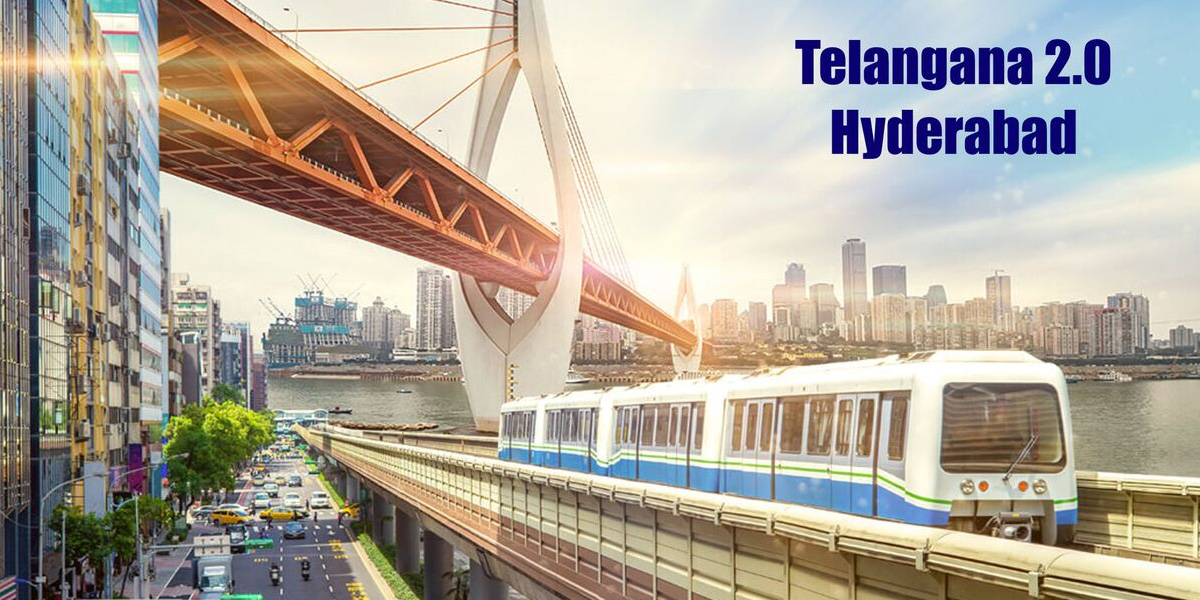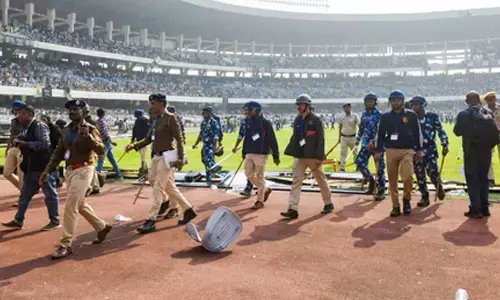Re-thinking infrastructure planning for Hyderabad

Hyderabad today is at the intersection of technology, investments and ambition But very soon the city will be at the cross section of Industry 40 and the challenges of rapidly changing world The city has to learn to balance growth with equity and climate adaptation The citys Infrastructure has to be planned in such a way to achieve this delicate balance
Hyderabad today is at the intersection of technology, investments and ambition. But very soon the city will be at the cross section of Industry 4.0 and the challenges of rapidly changing world. The city has to learn to balance growth with equity and climate adaptation. The city’s Infrastructure has to be planned in such a way to achieve this delicate balance.
In 2014, when the state government announced that Hyderabad will be shaped into a Global City, the citizens of Hyderabad expected creation of ‘Holistic Infrastructure’ and provision of universal services. But what we see today in the city is lakes frothing at the mouth, untreated garbage, increased squatter and slum settlements, billions of manhour loss due to traffic congestion, lack of pure drinking water and sanitation, increase in disease burden even as new age diseases like anxiety and depression are birthing because of air and noise pollution. Where has the city gone wrong?
Rethink Infrastructure
The global trend in infrastructure provision today is ‘holistic' –basically a systems approach for universal Infrastructure. But Hyderabad’s infrastructure planning over the years has been anything but holistic. Construction of sewerage infrastructure, flyovers, laying of model roads is mostly about building 'Hard Infrastructure' without much thought going into shaping the same for sustainability.
In a world that is campaigning against ‘siloed’ thinking, Hyderabad with its ‘transport only’ ‘water only' planning, seems to have sacrificed its Global City ambition at the altar of parochialism. Today, countries and cities are approaching Infrastructure planning differently. They are taking a ‘holistic and a systems’ view of the city and its infrastructure requirements. Physical infrastructure is being planned along with ‘soft’ infrastructure as both are seen as twin requirements for future. So what constitutes this soft infrastructure?
Soft infrastructure is basically about governance, it’s about reforms, it’s about fixing institutions. Like how a typical software program helps a computer perform, the soft infrastructure drives the performance of physical infrastructure. Let me explain what happens if this aspect is not understood.
Fix institutions, not pipes
Telangana Government’s plan to give better water supply to the city (which today is at a measly 1-3 hour intermittent supply) is indeed a classic example of this ‘insular planning'.
The government plans to invest in water supply infrastructure for pumping water from hundreds of miles away while not investing in the ‘governance' aspects of the utility simultaneously. This plan doesn't speak about addressing the ‘utility level' inefficiencies which in fact are responsible for majority of water supply problems in the city.
Good governance is nothing but institutional reforms, leadership at all levels, transparency in vendor management, billing and collection efficiencies, deployment of CRM and SCADA technologies for leak detection and management. Not investing in this aspect for years has made the city water-insecure.
By just investing in hard infrastructure and neglecting the soft infrastructure, Hyderabad is continuing to make the classic mistake of ‘fixing the pipes' and not ‘fixing the institutions’.
Hyderabad should perhaps learn from its global peers – the remarkable economic growth of cities in China has been attributed to their astonishing network of “hard” infrastructure, like roads, power stations, and communication networks etc. But today as the world watches, China is forced to rebalance its ‘skewed’ growth by investing in ‘soft infrastructure'. In other words China is forced to take a ‘hard look ‘at its institutional governance.
Hyderabad’s economic growth has to be balanced with protection of its environmental assets . This is another aspect where the city failed substantially. A case in point is the SRDP project where infrastructure planning has gone all wrong.
Strategic Road development Plan, the flagship project of the government is about building more roads for more cars. While the global choice of mass transit is still the good old ‘train', our city is promoting private cars.
While global cities are seriously studying the right modal mix – motorised and non motorised transportation with the core principle of ‘move people not cars', Hyderabad seems to be moving ahead with its regressive infrastructure plan. The city is also quite far from giving accessible infrastructure to the disabled and senior citizens. Studies have shown that providing mobility especially the last mile connectivity to women helped them join labour force, earn and contribute to the city’s GDP as tax payers.
In recent years, there has been a dramatic shift in the way politicians and planners are reimagining infrastructure. ‘Infrastructure Dialogues’ are popular around the world where government discusses infrastructure decisions with key stakeholders of the city. This is where city priorities can be mutually agreed upon.
The kind of infrastructure that changes the life of a resident of Japan is a lot different from what constitutes life-changing in London. Hyderabad’s infrastructure has to be seen through the prism of its unique economic, environment and demographic realities. Cosmetic solutions for systemic challenges and insular approach in Infrastructure planning will prove to be a disaster for Hyderabad’s future – a hard advice therefore my friends is not to go soft on ‘soft infrastructure’ of the city.

















